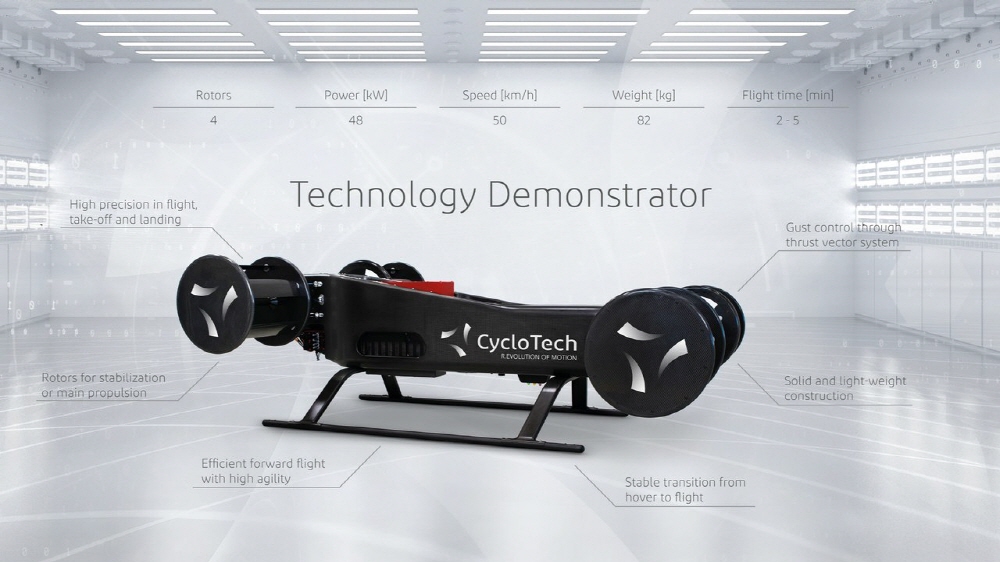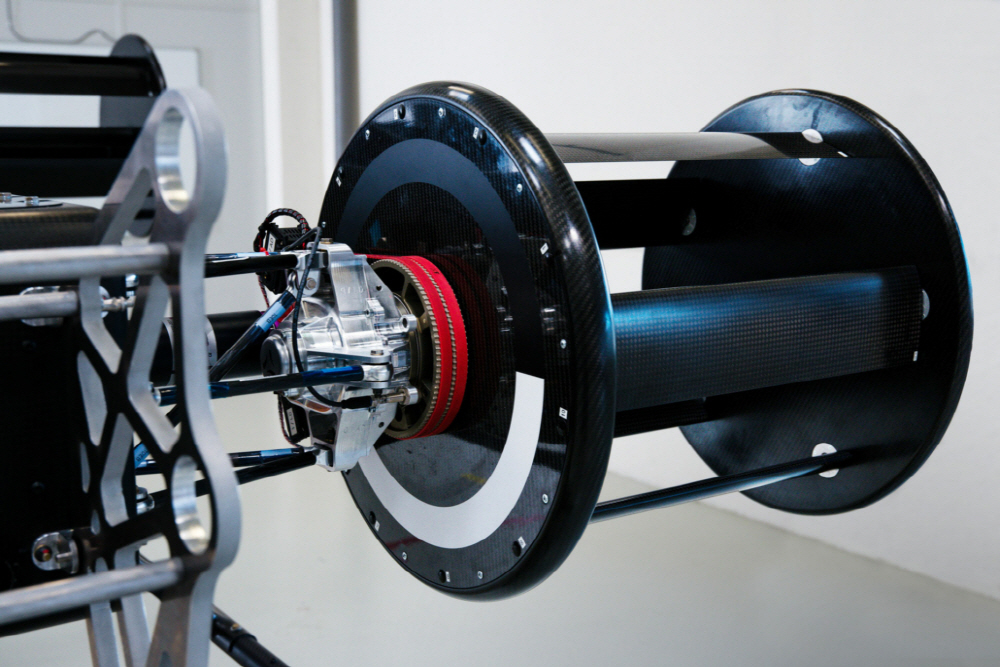
Austrian CycloTech technology has succeeded in the eVTOL floating test equipped with a CycloRotor using Schneider propellers used on ships.
In appearance, it resembles an F1 racing machine with only tire wheels. The biggest difference is that in existing unmanned aerial vehicles, the propeller rotates on the axis up and down, whereas it rotates on the left and right axis like a car tire.
Of course, this aircraft is light at 83 kg for demonstration purposes, but there are plans to make a five-seater unmanned taxi in the future. In this case, it is possible to increase or lengthen the cyclotor. Currently, there are five wings for demonstration, and it is said that they can move up and down or forward and backward through this adjustment. It is to move in the air at the angle of the wing.

The cyclotor is said to allow greater propulsion and precise control than a typical drone. There is a stereotype that flying propellers must be spread out radially, but even with this arrangement, you can get lift. Although there is no explanation, it is possible to think that it is floating due to the Magnus effect, which is a phenomenon in which lift acts on a rotating cylinder.
The cyclotor used in such a drone with excellent stability and operability has the potential to be applied to wind power and hydroelectric power generation. Related information can be found here.


















Add comment